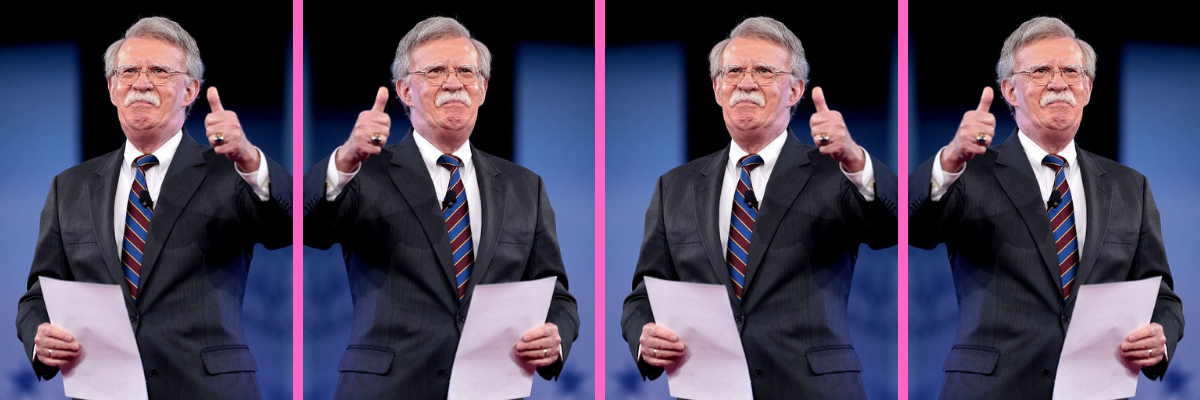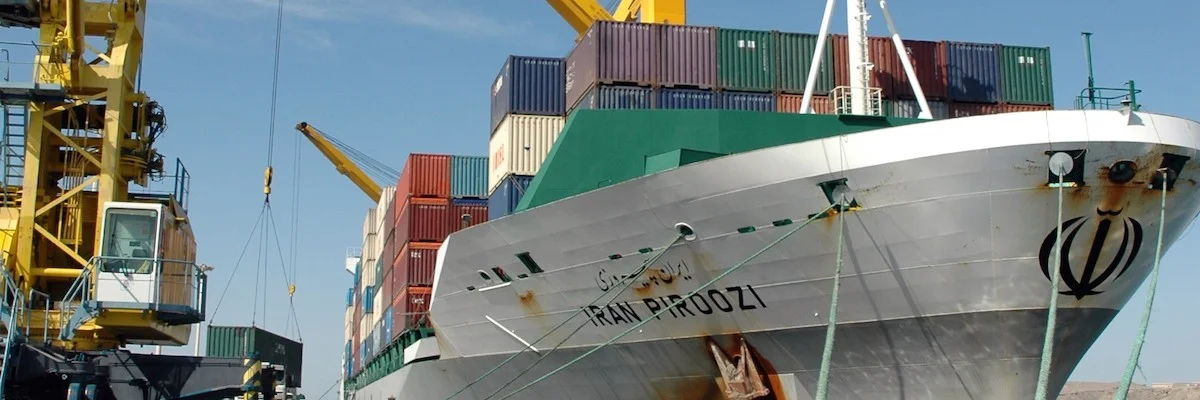With Bolton Gone, Iran Must Seize Opportunity for De-Escalation
The news that Trump has fired John Bolton—though the former national security advisor insists he resigned—will be well received in Tehran. Iranian foreign minister Javad Zarif had taken to branding Bolton as a member of the “B-Team”—alongside Israel’s Bibi Netanyahu, Saudi Arabia’s Mohammad bin Salman, and the UAE’s Mohammad bin Zayed—as a group that had been gunning for war in the Middle East. Iranian officials saw Bolton as a spoiler for diplomacy, a perception borne out by reporting on his role shaping and sharpening the Trump administration’s Iran policy over the last year.
Bolton’s ouster represents a real opportunity for the Trump administration to walk back from maximum pressure as more pragmatic officials outside the NSC find the space to assert their views once more. Despite the active roles played by the State Department’s Iran envoy, Brian Hook, and the Treasury Department’s undersecretary for terrorism and financial intelligence, Sigal Mandelker, in pushing forward the administration’s uncompromising messaging on Iran, the maximum pressure policy developed because Bolton was able to leverage his unique access to the president. Over the last year, Bolton repeatedly used this access to push the administration’s policy towards the extreme.
In March, Bolton and Pompeo were at loggerheads as to whether the Trump administration should revoke waivers permitting eight countries to continue to purchase Iranian oil on the condition that revenues were paid into tightly controlled escrow accounts. Bolton eventually prevailed. The revocation of the oil waivers in May led to insecurity in the Persian Gulf as Iran threatened the passage of maritime traffic through the Strait of Hormuz in retaliation for the restrictions on their oil exports.
In April, the Trump administration designated the Islamic Revolutionary Guard Corps (IRGC), part of Iran’s armed forces, a “Foreign Terrorist Organization,” in a move that had been debated by administration officials since late 2017, when the U.S. imposed a similar if less severe designation on the IRGC. Once again, Bolton was the key voice in favor of the move, despite the warnings of military and intelligence leaders that such a designation could make American troops in Iraq and Syria targets for retaliation.
In July, Bolton’s NSC advocated the revocation of the waivers which permit civil nuclear cooperation projects critical for the implementation of the JPCOA. European officials feared that the revocation of the waivers would effectively kill the nuclear deal. Trump eventually sided with Treasury Sectretary Steve Mnuchin who argued in favor of renewal, allowing the JCPOA to limp along.
Later that month, the Trump administration took the unprecedented step of sanctioning Zarif, despite reports earlier in the month that objections from Mnuchin and Pompeo had staved the move, strongly advocated by Bolton, to designate Iran’s foreign minister. The eventual designation caused an outcry in Iran, uniting figures across the political spectrum in condemnation of the U.S..
At each step Bolton doggedly pursued maximum pressure, pushing aside the concerns expressed the secretary of state, secretary of treasury, military leaders and intelligence officials alike. While Trump’s antagonism towards the Iran nuclear deal predates his appointment of Bolton, the transformation of the Trump administration’s Iran policy into one of “economic war” was nonetheless dependent on Bolton’s ideological fixations and mastery of the interagency process, qualities of which he has bragged.
Earlier this summer, several U.S. officials relayed to me their concern that the Trump administration’s Iran policy increasingly consisted of steps that created political costs for the United States—straining relationships with allies in Europe while deepening rifts with adversaries like China—while adding little meaningful economic pressure on Iran. The departure of Bolton may come as a relief to many of the career officials in the State and Treasury Departments who felt a growing incoherence—and their own irrelevance—in the administration’s policy.
It is certainly possible that President Trump will name another hawk to the role—there is no shortage of national security professionals in Washington wary of Iranian power—but it is highly unlikely that the replacement will have such a strong fixation on maximum pressure for its own sake. It is also unlikely that the new national security advisor will be as effective as John Bolton in working the bureaucratic machine of the White House.
In the hours following Bolton’s departure, Mnuchin insisted that the administration will maintain its maximum pressure campaign on Iran. But the need for that insistence is itself reflective of the opportunity now presented for the administration to slowly rollback aspects of its maximum pressure campaign and for Iran to offer the Trump administration a credible path to de-escalation.
With Bolton out, the prospects of direct talks between the US and Iran on the sidelines of the United Nations General Assembly later this month have certainly improved—Trump repeated his interest in meeting Iranian president Hassan Rouhani the same day he fired Bolton. But even if that remains a bridge too far for the Rouhani administration, who may consider it too risky to negotiate Trump in a moment of flux, there are more practical gains to be had. The simple restoration of the oil waivers, perhaps in accordance with the proposal advanced by French president Emmanuel Macron, could see Iran cease the resumption of uranium enrichment activities as part of its reduced compliance with the JCPOA.
Iran’s political predicament and economic pains are not John Bolton’s fault. But Bolton consistently pushed U.S. policy in directions that were perceived by Iranians as “war by other means.” Over the last few months, Iran has responded in kind. Bolton’s departure therefore is a useful reminder that while conflict may have structural roots—it is only as inevitable as the selection of a warmonger as national security advisor.
Photo: Wikicommons




